
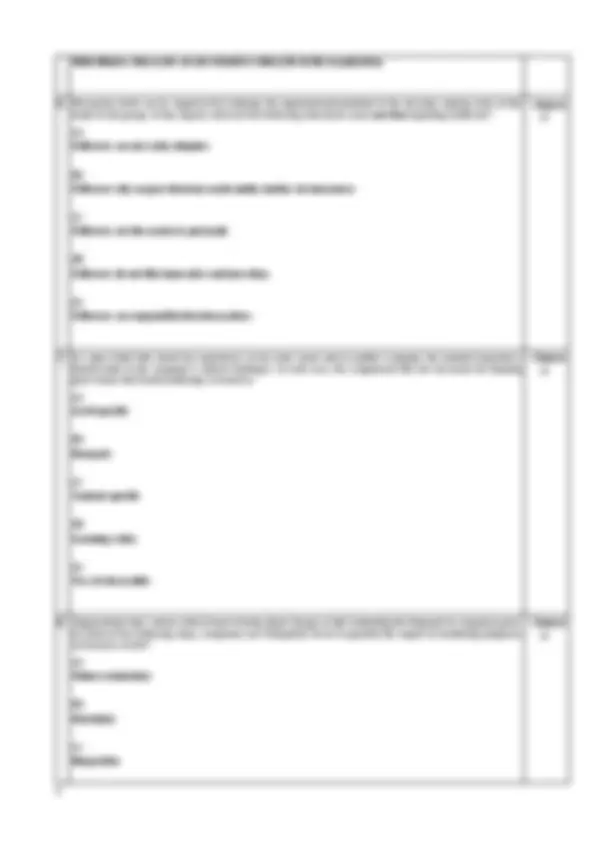
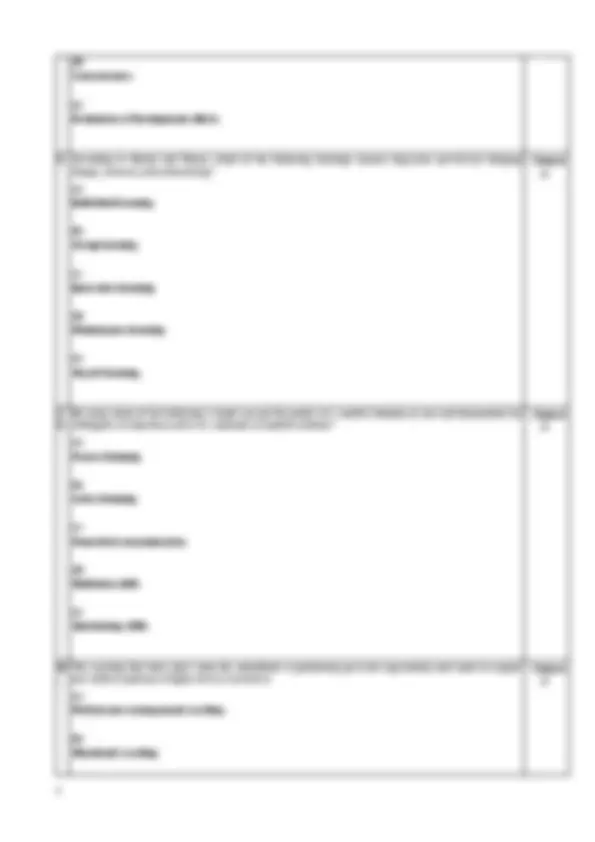
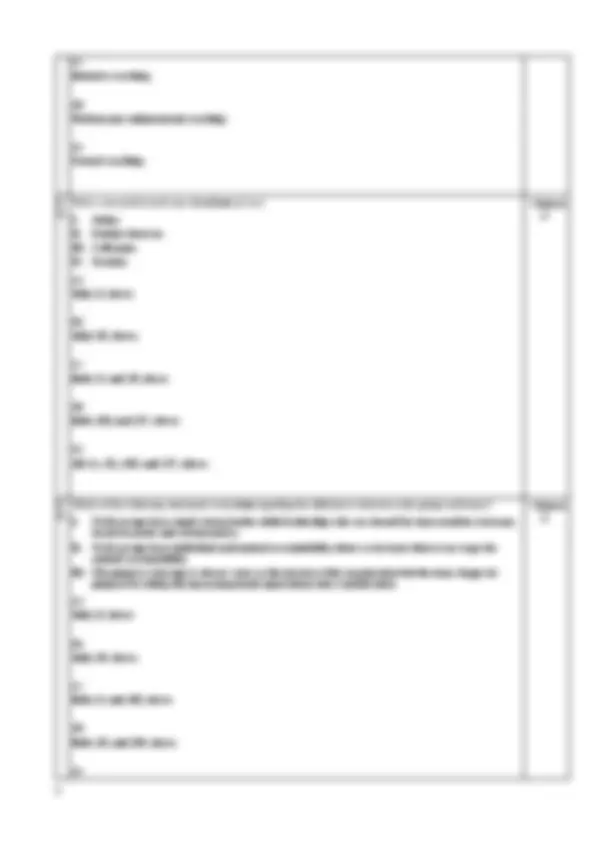
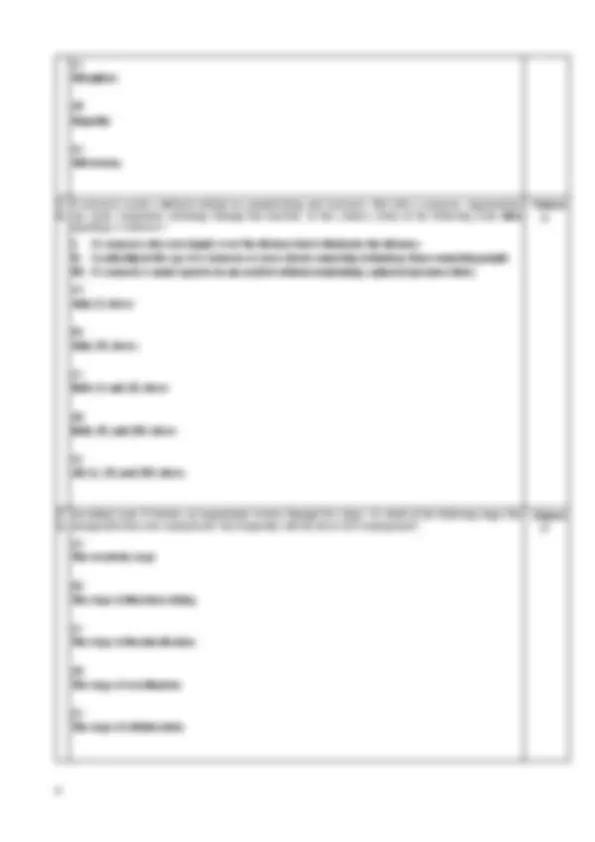
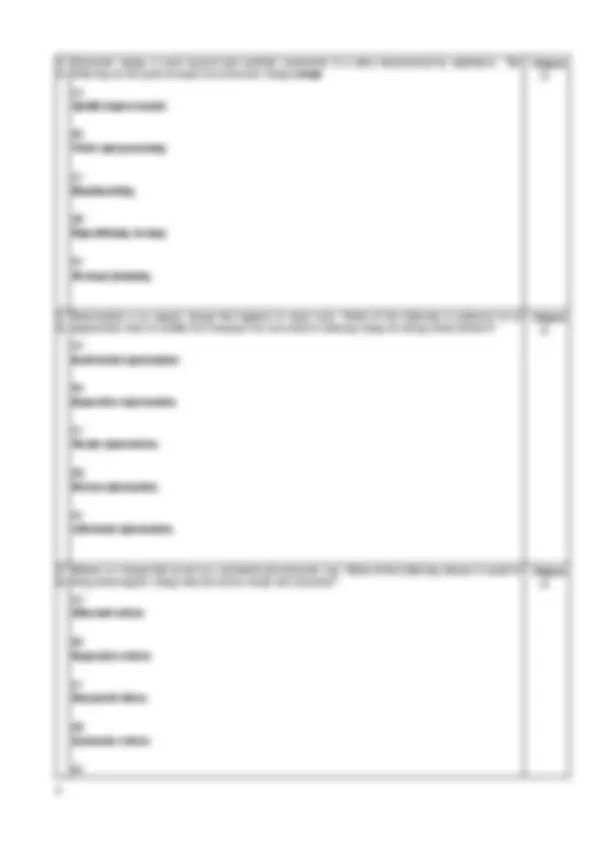
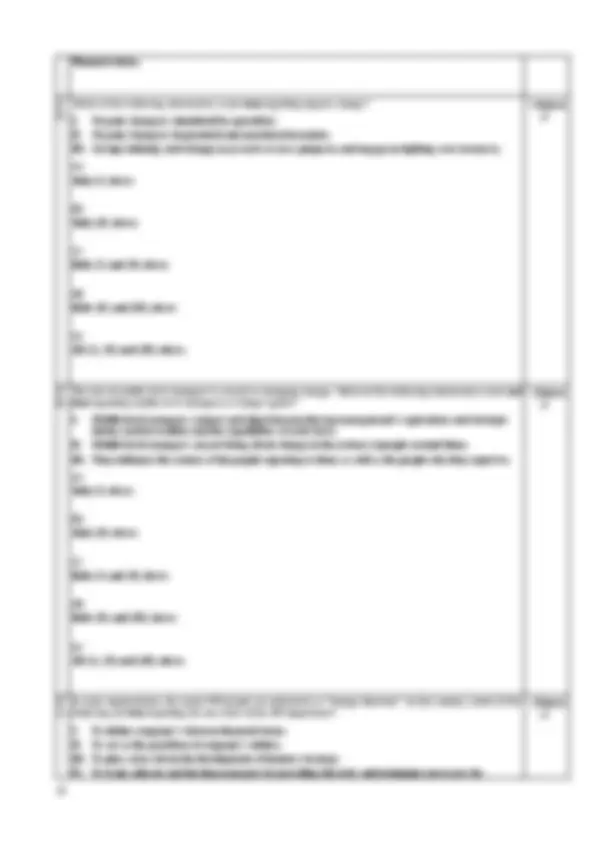

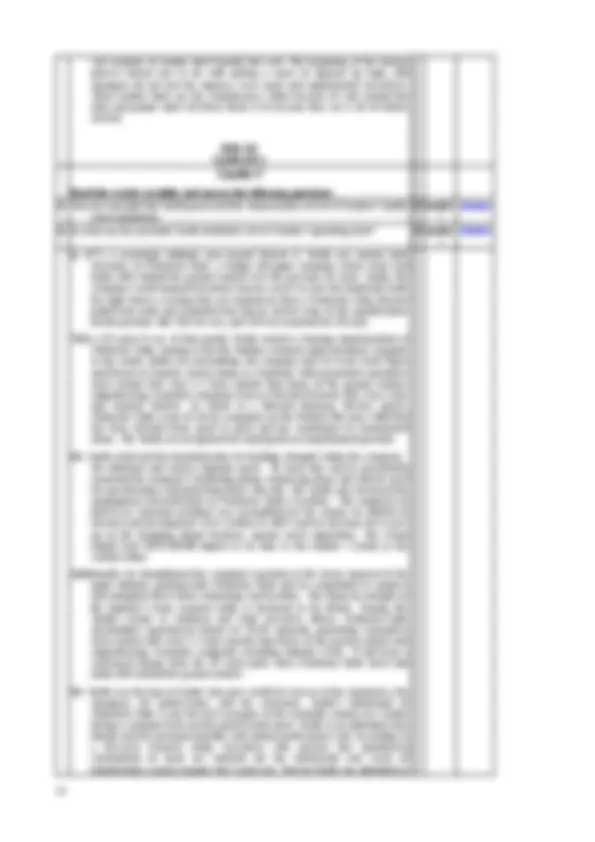
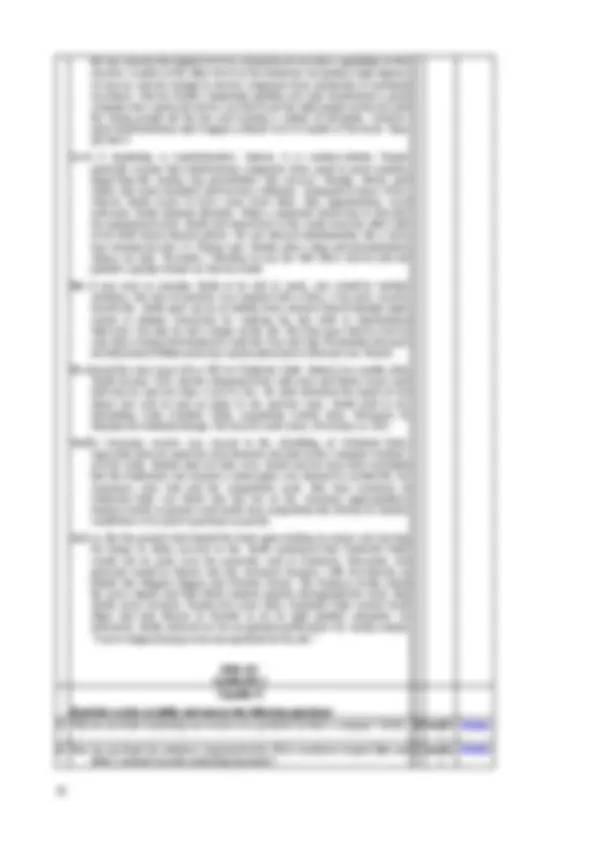
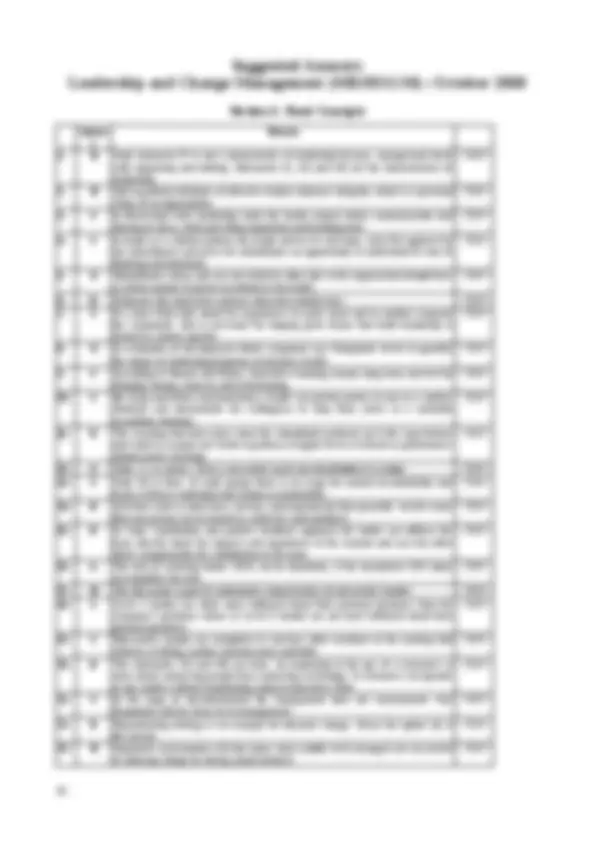
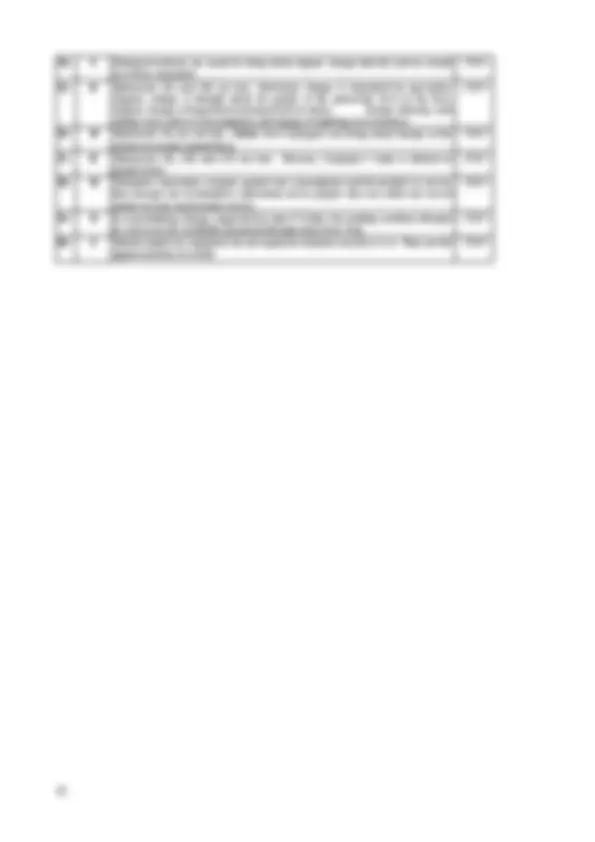
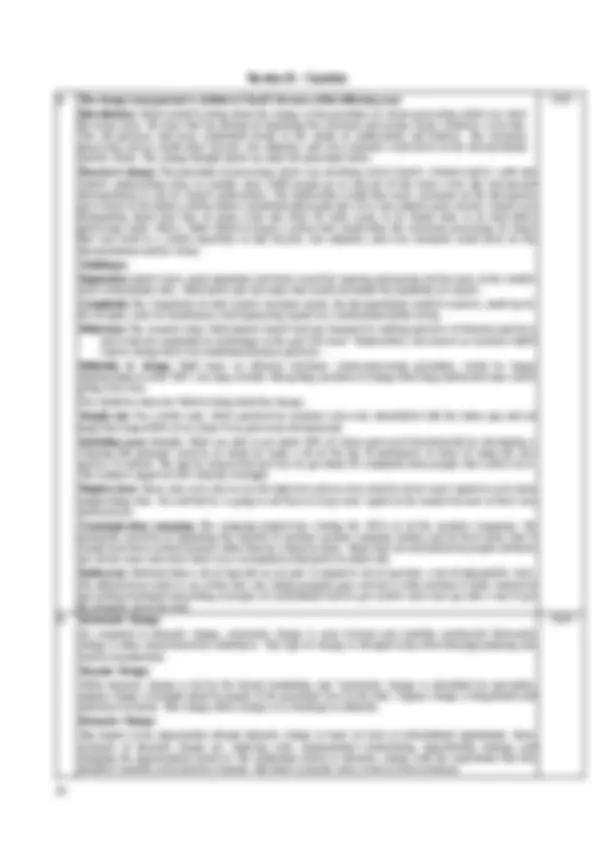
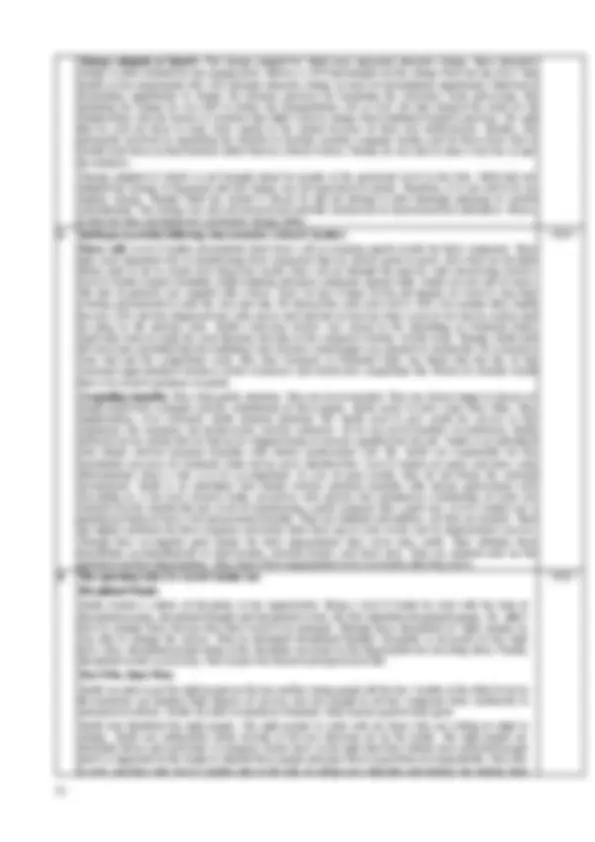
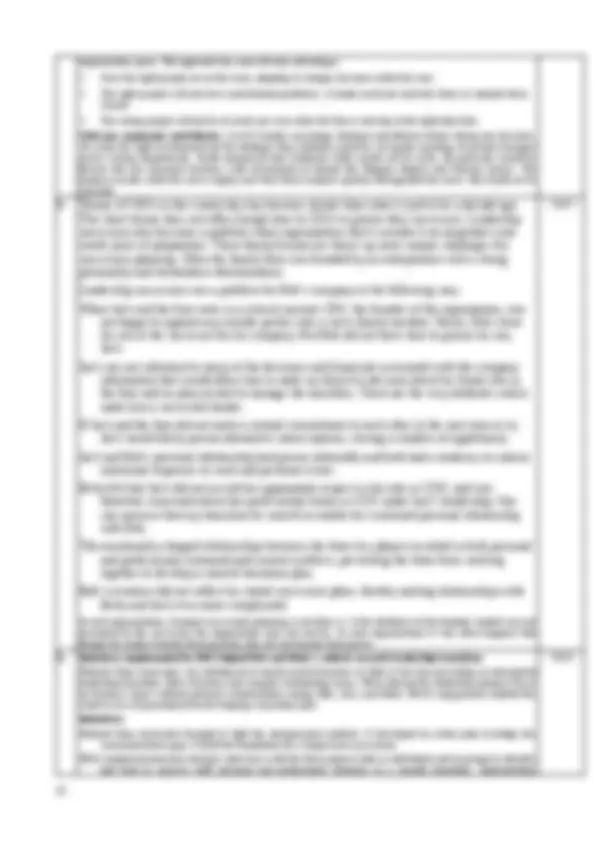
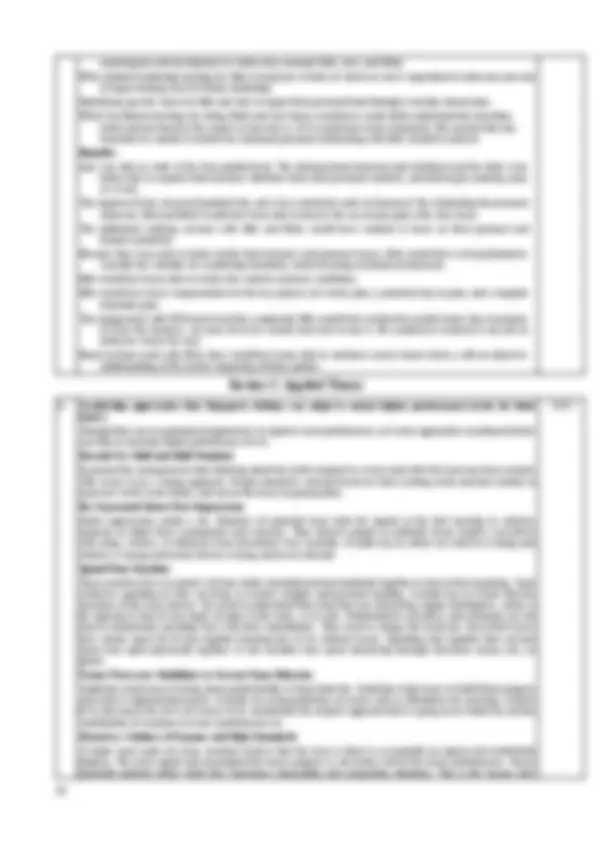
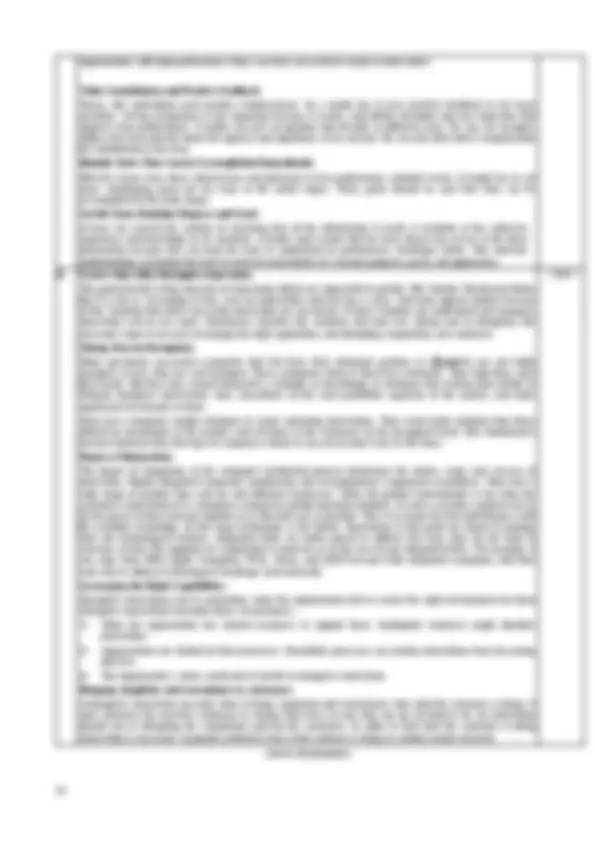



Study with the several resources on Docsity

Earn points by helping other students or get them with a premium plan


Prepare for your exams
Study with the several resources on Docsity

Earn points to download
Earn points by helping other students or get them with a premium plan
Community
Ask the community for help and clear up your study doubts
Discover the best universities in your country according to Docsity users
Free resources
Download our free guides on studying techniques, anxiety management strategies, and thesis advice from Docsity tutors
Question paper of leadership mgmt january 2009
Typology: Exams
1 / 25

This page cannot be seen from the preview
Don't miss anything!


















This section consists of questions with serial number 1 - 30. Answer all questions. Each question carries one mark. Maximum time for answering Section A is 30 Minutes.
1. In a business world that is constantly changing, an organization needs both leaders and managers, if they are to survive and grow. Which of the following statements is/are not the characteristic(s) of leadership?
I. Leadership deals with aligning people. II. Leadership provides a direction for change. III. Leadership involves motivating people. IV. Leadership deals with organizing and staffing.
(a) Only (I) above
(b) Only (IV) above
(c) Both (I) and (III) above
(d) Both (II) and (III) above
(e) All (I), (II), (III) and (IV) above.
2. Which of the following attributes of effective leaders enhances integrity, which is a personal virtue of an organization?
(a) Self-awareness
(b) Self-regulation
(c) Motivation
(d) Empathy
(e) Social skills.
3. In which of the following leadership styles, the leader keeps his employees happy and creates harmony among them thus ensuring better communication and sharing of ideas, while providing inspiration and building trust?
(a) Autocratic style
(b) Authoritative style
(c) Benevolent style
(d) Coaching style
(e) Democratic style.
4. Tannenbaum and Schmidt’s continuum indicates different patterns of leadership behavior. In which of the following patterns of behavior a leader arrives at a decision, seeks the approval of his subordinates and gives his subordinates an opportunity to understand its line of thinking and intentions?
(a) Leader as an announcer
(b) Leader as a seller
(c) Leader as a clarifier
(d) Leader as a senior partner
(e) Leader as seeker.
5. Which of the following subordinates do not have a certain amount of power in relation to the leader?
(a) Subordinates who have skills which are difficult to replace
(b) Subordinates who have exclusive information or knowledge
(c) Subordinates who maintain good relation with their leaders
(d) Subordinates whose jobs are crucial and have a high impact on the boss’s performance
(e)
(d) Consciousness
(e) Evaluation of Development efforts.
9. According to Bennis and Nanus, which of the following learnings ensures long-term survival by bringing change, renewal, and restructuring?
(a) Individual learning
(b) Group learning
(c) Innovative learning
(d) Maintenance learning
(e) On job learning.
By using which of the following a leader can put the parties of a conflict situation at ease and demonstrate his willingness to help them arrive at a mutually acceptable solution?
(a) Passive listening
(b) Active listening
(c) Nonverbal communication
(d) Mediation skills
(e) Questioning skills.
The coaching that takes place when the subordinate is performing up to the expectations and wants to acquire new skills to perform at higher levels is termed as
(a) Performance management coaching
(b) Situational coaching
(c) Intensive coaching
(d) Performance enhancement coaching
(e) Formal coaching.
To be a successful coach one should not act as a
I. Judge. II. Patient observer. III. Colleague. IV. Teacher.
(a) Only (I) above
(b) Only (II) above
(c) Both (I) and (II) above
(d) Both (III) and (IV) above
(e) All (I), (II), (III) and (IV) above.
Which of the following statements is/are true regarding the differences between work groups and teams?
I. Work groups have single strong leader while leadership roles are shared by team members in teams based on needs and circumstances. II. Work groups have individual and mutual accountability where as in teams there is no scope for mutual accountability. III. The purpose of groups is always same as the mission of the organization but the team shapes its purpose by taking the top management expectations into consideration.
(a) Only (I) above
(b) Only (II) above
(c) Both (I) and (III) above
(d) Both (II) and (III) above
(e)
(d) The committee does not have more than five members
(e) The committee evaluates the company’s top management team and its leadership development.
Narcissistic leaders who work for long hours, sacrificing their personal lives by spending all their time and energy at work and even when they are not in their workplace, they spend their time thinking and planning for work can be characterized as
(a) Relentless
(b) Workaholics
(c) Power Hungry
(d) Ruthless
(e) Loyal towards the organization.
Jim Collins has classified different levels of leaders. Which of the following is not a characteristic of Level 5 leaders?
(a) Level 5 leaders are a paradoxical blend of fierce and personal humility
(b) Level 5 leaders are stubborn and ruthless yet humble
(c) Level 5 leaders are often more bothered about their personal greatness than the company’s greatness
(d) Level 5 leaders are highly ambitious for their company
(e) Level 5 leaders accomplish great things for their organizations and they never take credit.
Which of the following do the narcissistic leaders use to convince other members in a meeting, that what he is talking is plain common sense and truth?
(a) Charisma
(b) Compelling vision
(c) Metaphors
(d) Empathy
(e) Self-esteem.
E-commerce needs a different outlook on manufacturing and commerce. But with e-commerce, organizations can create competitive advantage through this function. In this context, which of the following is/are false regarding e-commerce?
I. E-commerce does not simply cover the distance but it eliminates the distance. II. Leadership in the age of e-commerce is more about connecting technology than connecting people. III. E-commerce cannot operate in any market without maintaining a physical presence there.
(a) Only (I) above
(b) Only (II) above
(c) Both (I) and (II) above
(d) Both (II) and (III) above
(e) All (I), (II) and (III) above.
According Larry E.Greiner, an organization evolves through five stages. In which of the following stages the management does not communicate very frequently with the lower level management?
(a) The creativity stage
(b) The stage of direction-setting
(c) The stage of decentralization
(d) The stage of coordination
(e) The stage of collaboration.
Planned reform.
Which of the following statement(s) is/are true regarding organic change?
I. Organic change is stimulated by specialists. II. Organic change is fragmented and anarchical in nature. III. Groups infusing such change may work at cross-purposes and engage in fighting over resources.
(a) Only (I) above
(b) Only (II) above
(c) Both (I) and (II) above
(d) Both (II) and (III) above
(e) All (I), (II) and (III) above.
The role of middle level managers is crucial in managing change. Which of the following statement(s) is/are not true regarding middle level managers as change agents?
I. Middle level managers connect and align between the top management’s aspirations and strategic intent, market realities and the capabilities of work force. II. Middle level managers can not bring about change in the actions of people around them. III. They influence the actions of the people reporting to them as well as the people who they report to.
(a) Only (I) above
(b) Only (II) above
(c) Both (I) and (II) above
(d) Both (II) and (III) above
(e) All (I), (II) and (III) above.
In some organizations, the senior HR people are referred to as “change directors”. In this context, which of the following are true regarding the new roles of the HR department?
I. To define company’s vision in financial terms. II. To act as the guardian of company’s culture. III. To play a key role in the development of business strategy. IV. To train, educate and develop managers by providing the tools and techniques necessary for
ushering in the desired change.
(a) Both (I) and (II) above
(b) Both (I) and (III) above
(c) (I), (II) and (IV) above
(d) (II), (III) and (IV) above
(e) All (I), (II), (III) and (IV) above.
Disruptive innovation helps the customer meet his needs, but at a far lower price and more conveniently. In this context, which of the following is true regarding disruptive innovation?
(a) Disruptive innovators compete against existing consumption
(b) The product or service that emerges out of disruptive innovation serves people who were either not served earlier or were used to poor service
(c) The product or service that emerges out of disruptive innovation serves people who were already being served well
(d) Disruptive innovation goes systematically
(e) There is a defined structure for disruptive innovation.
Transforming an organization requires initiative, cooperation and willingness of the employees and managers in the organization to make sacrifices. In which of the following steps, suggested by John P. Kotter, the guiding coalition attempts to cash in on the credibility generated through short-term wins?
(a) Establishing a sense of urgency
(b) Creating a guiding coalition
(c) Communicating the changing vision
(d) Scoring short-term wins
Processing claims was still a mostly hands-on, shoe-leather procedure. A broker would walk into Lloyd’s underwriting room in London some 5,000 people go in and out of this room every day and present documentation to one of Lloyd’s underwriters, also known as members. The underwriter would then make comments on the documents, give it back to the broker, and the broker would then physically take it to a loss adjuster and a lawyer. Because of the complexity of what Lloyd’s members insure, the documentation could be massive, for example, years of maintenance and engineering reports on a multimillion dollar oil rig. Its claims procedures produced so much paper that until recently, Lloyd's was transporting about four tons of paper every day from London to Kent, some 50 miles away, to be stored store in its back-office processing center.
Ward knew an efficient electronic claims-processing procedure, which he began implementing in early 2007, was long overdue. But getting members to change their long-entrenched ways wasn't going to be easy. The system worked well it just didn't process claims as quickly as it might have. Many members, Ward recalls, didn't "want to change their very traditional business practices."
To get started, Ward sought out those members who were dissatisfied with the status quo. Together they worked out a system that would allow the electronic processing of claims that were held in a central repository. There lawyers, loss adjusters, and even claimants could check on the documentation and the claims. The group set stretch targets for getting the new system adopted. By the end of 2007 they hoped Lloyd’s would be processing 90% of its claims electronically.
By getting internal movers and shakers on board early, Ward was able to get about 30% of claims processed electronically by early 2007. After that, though, the adoption rate stalled. “We started to plateau,” Ward says. “That's not unusual in a change program.” So he switched gears, developing a “naming and praising” exercise in which he made a list of the top 10 performers in terms of using the new system. It worked: The day he released the first list, he got about 45 complaints from people who weren't on it. “The numbers improved 15% literally overnight,” Ward recalls. “It had quite a dramatic impact.” In addition to carrots, Ward used sticks, too. Those who were slow to use the high-tech system were asked to invest more capital to cover their underwriting risks. He describes this punitive lever with characteristic politesse: “If you don't process claims electronically,” he remembers telling members, “I’m afraid we’re going to ask you to keep more capital in the market because of your own inefficiencies.”
Finally, he launched a communication campaign that made him visit the CEOs of all the member companies. He knew that becoming personally involved and explaining the benefits to hesitant member company leaders would help him meet his goals. They had to know it would “assist them in their business rather than be a threat to them,” Ward says. “It required a lot of legwork on my part. It required a lot of speeches, a lot of high-profile visits.” Ward went out and looked for people and there are always some who knew there was a real problem that had to be dealt with. He worked initially with them. That's a big plus, but he still didn't use them enough to create urgency among a broader group of people.
Next, he goes on to do what everybody’s been taught to do in a change-management program, which is to get his team to come up with a plan and then execute on it. He suffered from what we see all the time: the change program goes well for a while and then it stalls. To Ward’s credit, instead of just getting frustrated and yelling at people, he immediately tried to get creative and come up with a way to get the program out of the stall. He came up with the “name and praise” exercise and the vast communication campaign.
After initial successes, urgency tends to drop even among the people who feel it at the beginning. Communication efforts can keep pumping that up. Ward was able to use his communication campaign to push his adoption rate even higher, and eventually to beyond 90% of claims processed using the new high-tech system. That's really quite extraordinary.
The kind of problem Ward faced is going to become more and more common. The
vast majority of leaders don’t handle this well. The beginning of the change process always has to do with getting a sense of urgency up high, and managers do not feel the urgency, even smart and sophisticated executives. These leaders don't see the complacency, either because it's just around the door and people don't tell them about it or because they see a lot of frantic activity.
Caselet 2
Read the caselet carefully and answer the following questions:
3. Can you conclude that Smith possessed the characteristics of level 5 leaders? Justify your explanation.
( 9 marks )
4. In what way do you think Smith exhibited a level 5 leader’s operating style? ( 9 marks )
In 1971, a seemingly ordinary man named Darwin E. Smith was named chief executive of Kimberly-Clark, a stodgy old paper company whose stock had fallen 36% behind the general market over the previous 20 years. Smith, the company’s mild-mannered in-house lawyer, wasn’t so sure the board had made the right choice a feeling that was reinforced when a Kimberly-Clark director pulled him aside and reminded him that he lacked some of the qualifications for the position. But CEO he was, and CEO he remained for 20 years.
What a 20 years it was. In that period, Smith created a stunning transformation at Kimberly-Clark, turning it into the leading consumer paper-products company in the world. Under his stewardship, the company beat its rivals Scott Paper and Procter & Gamble. And in doing so, Kimberly-Clark generated cumulative stock returns that were 4.1 times greater than those of the general market, outperforming venerable companies such as Hewlett-Packard, 3M, Coca-Cola, and General Electric. As noted in a Harvard Business Review article, Kimberly-Clark is one of eleven companies on the Fortune 500 since 1965 that has been elevated from good to great and has maintained its transformed status. Mr. Smith was recognized for making this accomplishment possible.
Mr. Smith achieved this transformation by building strength within the company. He redefined and raised corporate goals. To reach this end he persistently examined the company’s leadership group, winnowing those who did not meet his specifications and promoting those who did. Mr. Smith also increased the geographical diversification of Kimberly-Clark’s facilities. The emphasis he placed on consumer products was exemplified by the money he allotted to research and development ($111 million in 1987) and his decision not to give up on the fledgling diaper business, against much opposition. His vision helped lead HUGGIES® diapers to its rank as the number 1 brand in the country today.
Additionally, he strengthened the company’s position in the tissue segment of the paper industry, pushing both Kimberly-Clark and its competitors to improve and strengthen their tissue technology and facilities. The financial strength of the industry’s tissue segment today is testament to his efforts. During Mr. Smith’s tenure as chairman and chief executive officer, Kimberly-Clark stockholders experienced returns of 19.6% annually, generating cumulative stock returns that were 4.1 times greater than those of the general market and outperforming venerable companies including industry rivals. It had been a welcomed change from the 20 years prior when Kimberly-Clark stock had fallen 36% behind the general market.
Mr. Smith was the type of leader who gave credit for success to the employees, the managers, his predecessors, and the customers. Smith’s turnaround of Kimberly-Clark is one the best examples in the twentieth century of a leader taking a company from merely good to truly great. Smith is an individual who blends extreme personal humility with intense professional will. According to a five-year research study, executives who possess this paradoxical combination of traits are catalysts for the statistically rare event of transforming a good company into a great one. Darwin Smith was identified as
Richard Dana Associates (RDA) was brought in by the owners of a family-owned business with complex relationship issues at a time preceding an anticipated leadership transition. Following individual and group coaching sessions, RDA was able to help the leadership separate personal issues, and codify practices through formal policies to allow the leadership group to focus on business issues without personal complications. At the end of RDA's engagement, the client was well-positioned to begin developing a transition plan.
Bob, founder, CEO, and owner of a 20-year-old, closely-held business, hoped to groom his 30-year-old son, Jack to take over the business in the next five years. The firm was currently co-run by Betty, the COO and Operations Manager. She was a longtime employee of the firm, and also had been Bob's life partner for most of that time. Both Jack and the firm were at a critical juncture, if Jack and the firm did not make a mutual commitment to each other in the next year or so, Jack would likely pursue alternative career options, closing a window of opportunity. And yet Jack was not privy to many of the decisions and financials underlying the company information that would allow him to make an objective decision about his future role in the firm and no plan existed to manage the transition. Jack and Bob's personal relationship had grown estranged, and both prone to intense emotional responses to work and personal issues. In addition, Betty felt that Jack did not accord her appropriate respect in her role as COO, and was therefore concerned about her professional future as COO under Jack's leadership; she was also anxious that any transition be smooth to enable her continued personal relationship with Bob, the owner. The emotionally-charged relationships between the three key players resulted in both personal and professional command-and-control conflicts, preventing the three from working together to develop a smooth transition plan. Furthermore, Bob's existence did not reflect his stated succession plans, thereby making relationships with Betty and Jack even more complicated. Richard Dana Associates was engaged to help bring to light the interpersonal conflicts, to develop an action plan to bridge the communication gaps, and to start building the foundation for a longer-term succession.
RDA began by conducting numerous strategic interviews with the three players - both as individuals and in groups - to identify and air both personal and professional obstacles to a smooth transition. Each person aired their own particular concerns and articulated their specific personal goals. Based on these discussions, RDA worked with the three key players to identify concrete goals and changes including:
clarifying any differences that arose.
Through the course of RDA's engagement, the requisite underlying systems were put in place job descriptions, policies and procedures, communication skills training, and relationship building. Jack was able to work at the firm productively. The dysfunctional behavior had stabilized and the three were better able to separate their business identities from their personal conflicts, and had begun working more as a team.
The benefits of their improvements spread to the rest of the organization in the form of improved trust, increased productivity, and a less emotional work environment. By eliminating the personal obstacles, Bob and Betty were ready to envision a succession plan.
RDA facilitated additional working sessions with Bob and Betty, to focus on their personal and business priorities.
Section C : Applied Theory ( Ma This section consists of questions with serial number 7 - 8. Answer all questions. Marks are indicated against each question. Do not spend more than 25 -30 minutes on Section C.
7. Singapore Airlin implement team perfo higher perf 8. Mr. Vishal Dix impossible even an un disruptive i
24. C Energized reforms are meant to bring about organic change directly and are steady as well as consistent.
25. D Statements (II) and (III) are true. Systematic change is stimulated by specialists. Organic change is brought about by people at the grassroots level in the firm. Organic change is fragmented and anarchical in nature. Groups infusing such change may work at cross-purposes and engage in fighting over resources.
26. B Statements (II) are not true. Middle level managers can bring about change in the actions of people around them.
27. D Statements (II), (III) and (IV) are true. Because, Company’s vision is defined in people terms.
28. B Disruptive innovators compete against non consumption and the product or service that emerges out of disruptive innovation serves people who was either not served earlier or were used to poor service.
29. E In consolidating change, suggested by john P. Kotter, the guiding coalition attempts to cash in on the credibility generated through short-term wins.
30. C Mental models of employees do not represent situation exactly as it is. They are the approximations of reality.
Section B : Caselets
1. The change management is evident at Lloyd’s because of the following ways
Introduction: Ward wanted to bring about the change in the procedure of claims processing which was stuck for many years. He knew that his attempt of beginning the electronic processing claims would be a over due. The old practices had been established firmly in the minds of underwriters and brokers. The electronic processing system would allow lawyers, loss adjusters, and even claimants could check on the documentation and the claims. The change brought about can make the procedure better. Reason to change: The procedure of processing claims was not doing well at Lloyd’s. A broker had to walk into Lloyd’s underwriting room in London some 5,000 people go in and out of this room every day and present documentation to one of Lloyd’s underwriters. The underwriter would then make comments on the documents, give it back to the broker, and the broker would then physically take it to a loss adjuster and a lawyer. Lloyd's was transporting about four tons of paper every day from 50 miles away, to be stored store in its back-office processing center. Hence, Ward wanted to begin a system that would allow the electronic processing of claims that were held in a central repository so that lawyers, loss adjusters, and even claimants could check on the documentation and the claims. Challenges: Reputation Lloyd’s had a great reputation and track record for insuring and paying out for some of the world's most extraordinary risks. Ward had to take decisions that would not hinder the reputation of Lloyd’s. Complexity The complexity of what Lloyd’s members insure, the documentation could be massive, made up of, for example, years of maintenance and engineering reports on a multimillion dollar oil rig. Reluctance The moment when Ward joined Lloyd’s had not changed its working practices or business practices and it had not responded to technology in the past 320 years. Underwriters, also known as members didn't want to change their very traditional business practices. Difficulty to change Ward knew an efficient electronic claims-processing procedure, which he began implementing in early 2007, was long overdue. But getting members to change their long-entrenched ways wasn't going to be easy. Key Initiatives taken by Ward to bring about the change: Sought out: For a better start, Ward searched for members who were dissatisfied with the status quo and set target they hoped 90% of its claims to be processed electronically. Switching gears Initially, Ward was able to get about 30% of claims processed electronically by developing a “naming and praising” exercise in which he made a list of the top 10 performers in terms of using the new system. It worked: The day he released the first list, he got about 45 complaints from people who weren't on it. The numbers improved 15% literally overnight. Punitive lever Those who were slow to use the high-tech system were asked to invest more capital to cover their underwriting risks. He said that he is going to ask them to keep more capital in the market because of their own inefficiencies. Communication campaign The campaign helped him visiting the CEOs of all the member companies. He personally involved in explaining the benefits to hesitant member company leaders and let them know that it would assist them in their business rather than be a threat to them. Ward went out and looked for people and there are always some who knew there was a real problem that had to be dealt with. Endeavour Ward had done a lot of legwork on my part. It required a lot of speeches, a lot of high-profile visits. He suffered from what we see all the time: the change program goes well for a while and then it stalls. Instead of just getting frustrated and yelling at people, he immediately tried to get creative and come up with a way to get the program out of the stall.
2. Systematic Change
As compared to dramatic change, systematic change is more focused and carefully constructed Systematic change is often characterized by orderliness. This type of change is attempted only after thorough planning and careful consideration. Organic Change While dramatic change is led by the formal leadership, and “systematic change is stimulated by specialists, organic change is brought about by people at the grassroots level in the firm. Organic change is fragmented and anarchical in nature. This change often emerges as a challenge to authority. Dramatic Change Top leaders in the organization attempt dramatic change in times of crisis or extraordinary opportunity. Some examples of dramatic change are: reducing costs, organizational restructuring, repositioning strategy, and changing the organizational mind-set The leadership resorts to dramatic change with the expectation that this initiative would be welcomed by everyone. But there is usually some covert or overt resistance.